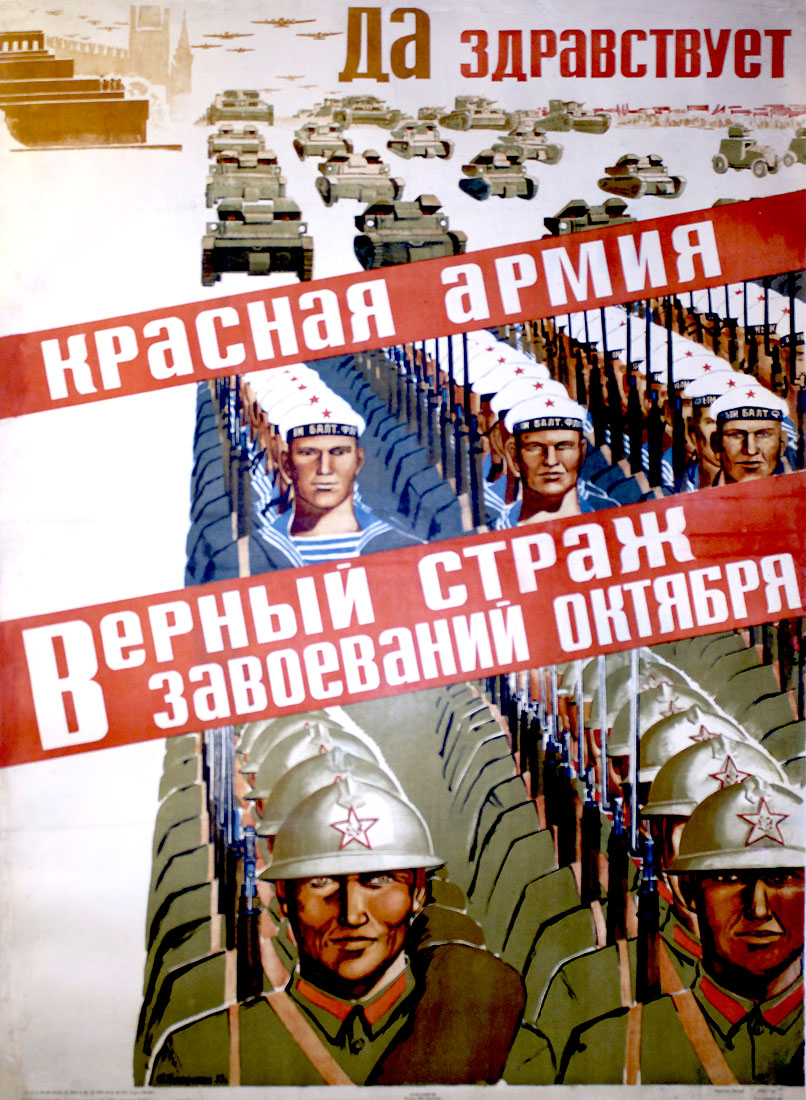
Long Live the Red Army the reliable watchdog of the gains of October!
Poster Number: PP 435
Category: Military
Media Size: 46х34.5
Poster Type: Lithograph and Offset
Publishing Date: 1933
Technical Information on Poster: Izogiz No. 6216; I. 35. No. 1268; [Approved for] production September 4, 1933; Approved for printing September 10, 1933; Standard format 82 x 110; Volume 1 sheet of paper; Order No. 246.
Print Run: 5,000
Glavlit Directory Number: B-30632
Catalog Notes: PP 435 Military; Sister Poster PP 703 (same artist and same theme).
Artist: Kokorekin, Aleksei Alekseevich — Кокорекин, Алексей Алексеевич
Aleksei Alekseevich Kokorekin was born in a part of Russian Empire that was on the border of the Ottoman Empire. He began is studies in the cites of Krasnodar and Poltava. In 1918, Kokorekin attended the Krasnodar School of Painting and Sculpture where he graduated in 1927. From 1927 to 1929, Kokorekin attended the Kuban' Art and Pedagogical School in Krasnodar. While living in Krasnodar, he worked both as a poster designer and a decorator for the town theater. ...
Read More About This Artist
Printer: Illegible Printer Name —
Publisher: Ogiz-IzoGiz, Moscow-Leningrad — Огиз-Изогиз, Москва-Ленинград
Ogiz was the Association of the State Book and Magazine Publishers. Its main offices were located in Moscow and in Leningrad. The Sovnarkom of the Russian Socialist Federative Soviet Republic established Ogiz in 1930 to centralize publishing activities under a state monopoly in order to eliminate duplication of printed material, streamline and control publishing production and output, and to create a base for marketing books, training and technical manuals. In 1931, the Central Committee of the USSR ...
Read More About This Publisher